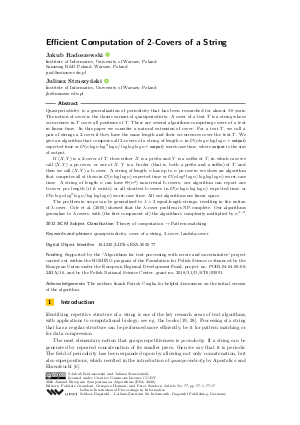LIPIcs.ESA.2020.77.pdf
- Filesize: 0.6 MB
- 17 pages

 Creative Commons Attribution 3.0 Unported license
Creative Commons Attribution 3.0 Unported license




Feedback for Dagstuhl Publishing